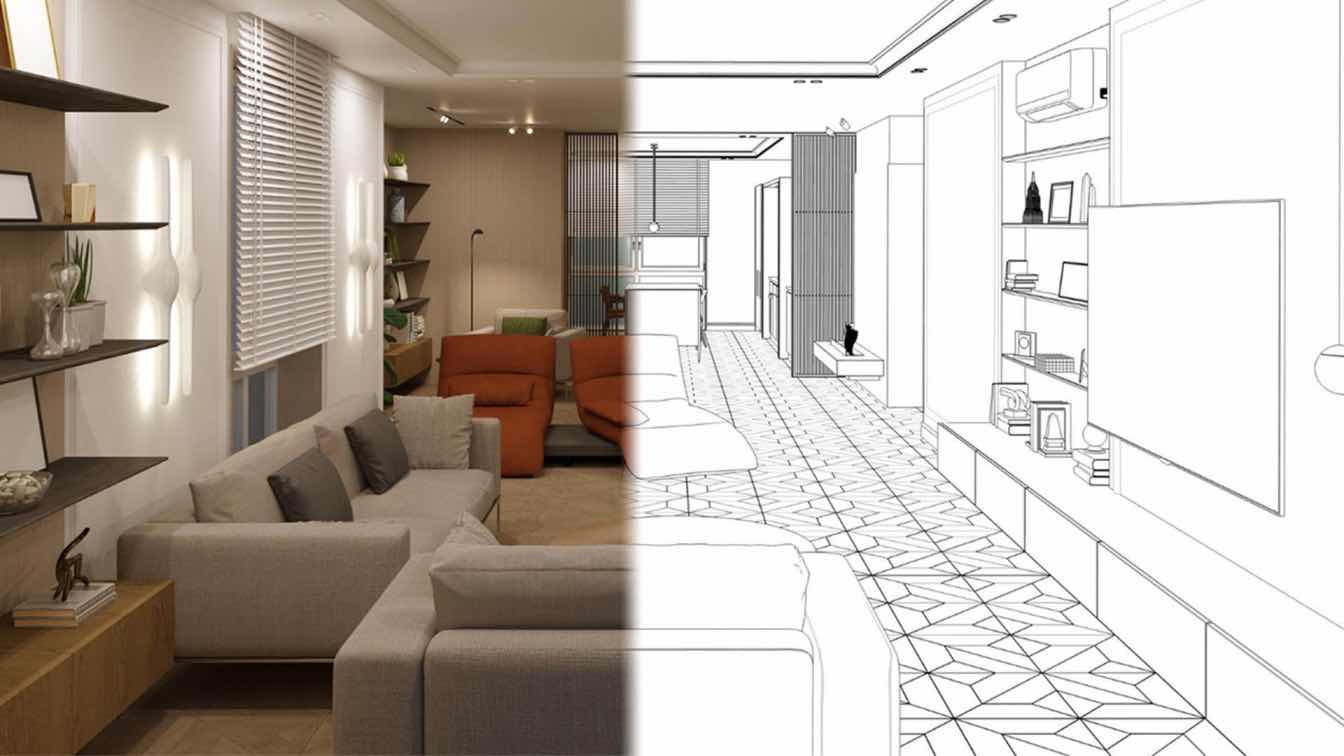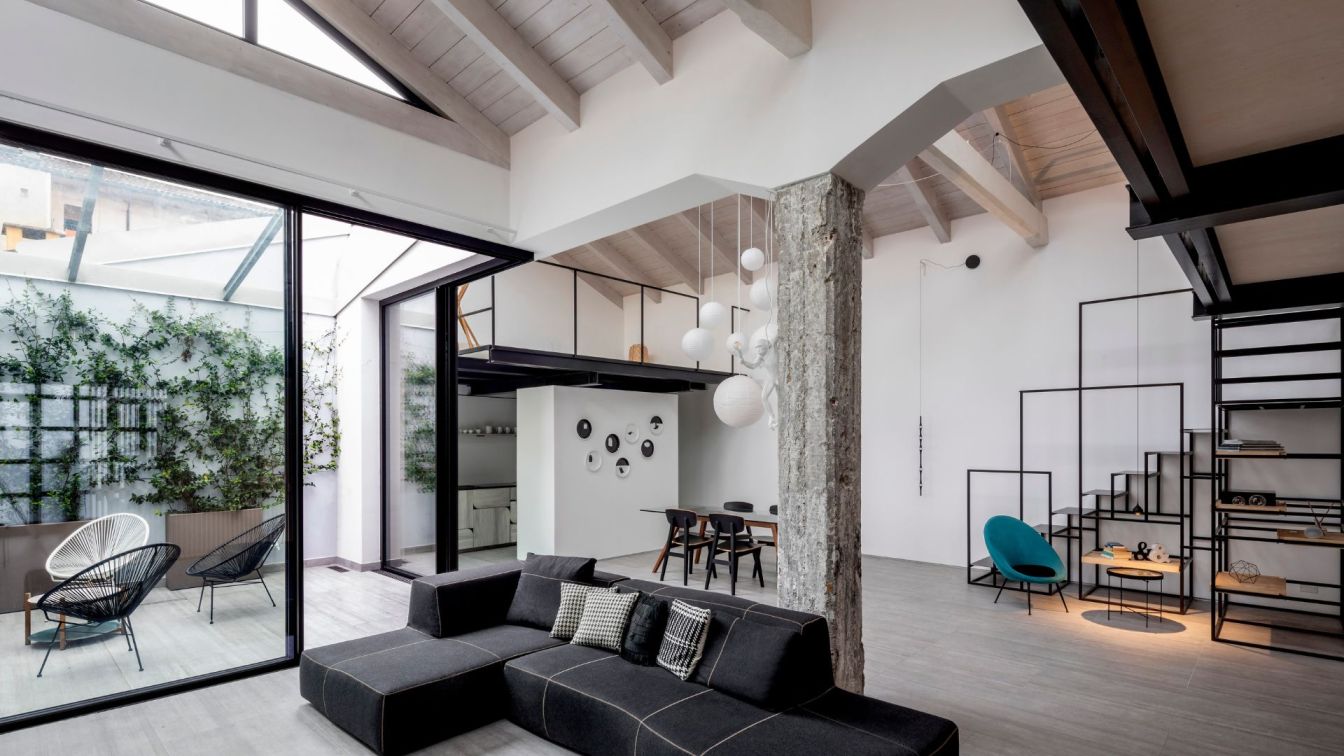Step into any room, and you're not just experiencing interior design—you're immersed in the very DNA of the building itself. Architecture, the bones and sinew of a structure, is far more than just blueprints and beams. It's a silent conductor, orchestrating the rhythm and flow of every interior space.
From the soaring ceilings of a Gothic cathedral to the sleek lines of a minimalist loft, architecture doesn't merely house our lives; it shapes them. The way light streams through a window, the way a staircase ascends, or even the texture of a wall are all architectural whispers that guide the choices we make in furnishing, decorating, and ultimately inhabiting a space.
In collaboration with DeCasa Collections, this article will delve into how architectural styles, from the ornate to the avant-garde, intrinsically dictate their interior counterparts. We'll uncover how specific elements like windows and ceilings influence everything from furniture choices to color palettes. And we'll emphasize the invaluable collaboration between architects and interior designers, a partnership that transforms houses into homes and buildings into havens.
Architectural Styles and Their Interior Design Counterparts:
Modern Architecture
Modern architecture, born in the early 20th century, celebrates light, space, and functionality. This style prioritizes a seamless connection between the interior and exterior, characterized by open floor plans, clean lines, large windows, and minimalist aesthetics.
Key Features:
Open Floor Plans: Walls dissolve, creating airy, interconnected spaces that build community and flow.
Clean Lines: Straightforward geometry and unadorned surfaces produce order and tranquility.
Large Windows: Expansive glazing floods interiors with natural light, blurring the lines between indoors and out.
Minimalist Aesthetics: Ornamentation is eschewed in favor of simplicity, allowing the beauty of materials and form to shine.
Interior Design Implications:
Modern architecture's aesthetic calls for an interior that complements its clean lines and open spaces. Here's how to create a harmonious dialogue:
Minimalist Furniture: Opt for sleek, low-profile pieces with simple silhouettes that don't clutter the visual field.
Neutral Color Palettes: Embrace a calming backdrop of whites, grays, and earth tones, allowing pops of color to come from artwork or accessories.
Functionality First: Choose furniture and decor that serve a purpose, avoiding unnecessary clutter and maximizing utility.
Natural Materials: Incorporate wood, stone, leather, and other organic elements to add texture to the minimalist aesthetic.
Example:
The Farnsworth House: Mies van der Rohe's iconic glass-and-steel masterpiece is a prime example of how minimalist architecture can create a serene and contemplative living environment. Its interior design mirrors the exterior's simplicity, with sparse furnishings and a focus on natural light.
Traditional Architecture
Stepping into a traditional home is akin to embarking on a journey through time. Steeped in history, traditional architecture draws inspiration from centuries of design heritage.
Key Features:
Formal Layouts: Defined spaces for living, dining, and entertaining, often arranged symmetrically around a central hall or staircase.
Ornate Details: Intricate moldings, carved woodwork, decorative cornices, and other embellishments add layers of intrigue.
Fireplaces: A focal point in many traditional homes, fireplaces exude warmth and offer a gathering place for family and friends.
High Ceilings: Soaring ceilings form an aura of grandeur and airiness, often adorned with chandeliers or decorative medallions.
Interior Design Implications:
Traditional architecture's richness and character invite a layered and curated interior design approach:
Classic Furniture Styles: Embrace timeless pieces like wingback chairs, Chesterfield sofas, and antique desks, complementing the architecture's elegance.
Rich Fabrics: Opt for luxurious materials like velvet, silk, brocade, and tapestry, adding depth to the space.
Warm Colors: To create an inviting ambiance, choose a palette of rich, saturated hues like burgundy, forest green, navy blue, or gold.
Antiques and Heirlooms: Incorporate pieces with history and patina for character and personality within the interior.
Decorative Accents: Layer decorative elements like throw pillows, tapestries, artwork, and mirrors to enhance the visual richness of the space.
Example:
Tudor Revival Cottages: Characterized by steeply pitched roofs, half-timbering, and leaded glass windows, Tudor Revival cottages evoke a sense of cozy charm. Interiors often feature exposed beams, stone fireplaces, and comfortable furnishings with floral or plaid upholstery.
Architectural Elements and Their Interior Dialogue
While architectural styles lay the foundation for interior design, specific elements within a building act as subtle cues, guiding the creative choices that bring a space to life.
Windows and Natural Light: Choreographing Luminosity
Windows are not just openings in a wall but conduits for natural light, mood enhancers, and view framers. Their size, placement, and style significantly impact how a room feels and functions.
Size: Large windows invite abundant light, creating airy and uplifting spaces. Smaller or strategically placed windows can create intimacy or drama.
Placement: Windows facing south or west capture warm sunlight throughout the day, while north-facing windows offer cooler, more consistent light. East-facing windows are ideal for catching the morning sun.
Style: The architectural style of windows (e.g., bay, casement, arched) influences the interior aesthetic. Consider complementary window treatments that enhance the style while maximizing light control and privacy.
Ceiling Height: Scaling Design Ambitions
The height of a ceiling dramatically alters the perceived scale and atmosphere of a room.
High Ceilings: Grand and airy, high ceilings invite dramatic lighting fixtures, oversized artwork, and taller furniture pieces. They provide spaciousness and luxury.
Low Ceilings: Cozier and more intimate, low ceilings call for streamlined furniture, lower-hanging light fixtures, and a focus on horizontal lines to visually expand the space. A-frame designs, with their steep and sloping effect, can provide this aesthetic.
The Alchemy of Collaboration
The synergy between architects and interior designers is where true magic happens in creating exceptional living spaces. It's a partnership akin to a composer and a conductor, where the architect's vision is brought to life through the interior designer's orchestration.
The Power of Shared Vision:
When architects and interior designers collaborate from the inception of a project, a shared vision emerges. This unified perspective ensures that every design decision, from the macro scale of the building's form to the micro level of furniture selection, contributes to a cohesive and harmonious whole.
Navigating the Collaborative Journey:
Effective collaboration between architects and interior designers requires open communication, mutual respect, and a willingness to compromise. Here are some tips for fostering a successful partnership:
1. Early Involvement: Engage both professionals early in the design process to ensure a unified vision from the start.
2. Regular Communication: Schedule regular meetings to discuss progress, share ideas, and address any challenges that arise.
3. Shared Resources: To visualize and refine the design, utilize collaborative tools like mood boards, 3D models, and virtual reality simulations.
4. Mutual Respect: Acknowledge and value each other's expertise and be open to feedback and suggestions.
5. Flexibility: Be willing to compromise and adapt as the project evolves.
Final Thoughts
As we conclude, one truth resonates: these disciplines are inseparable. Architecture, the silent storyteller, sets the stage, while interior design breathes life into the narrative, filling spaces with personality and warmth. Whether drawn to the airy minimalism of modern architecture, the timelessness of traditional styles, or the raw authenticity of industrial spaces, understanding your home's architectural DNA unlocks its full interior design potential. Embrace the character of your space, and allow the architecture to guide your interior design choices.





